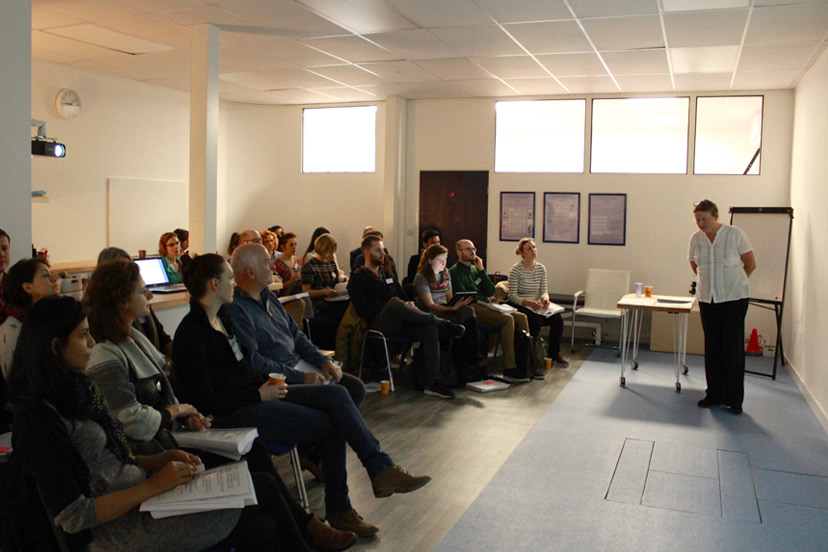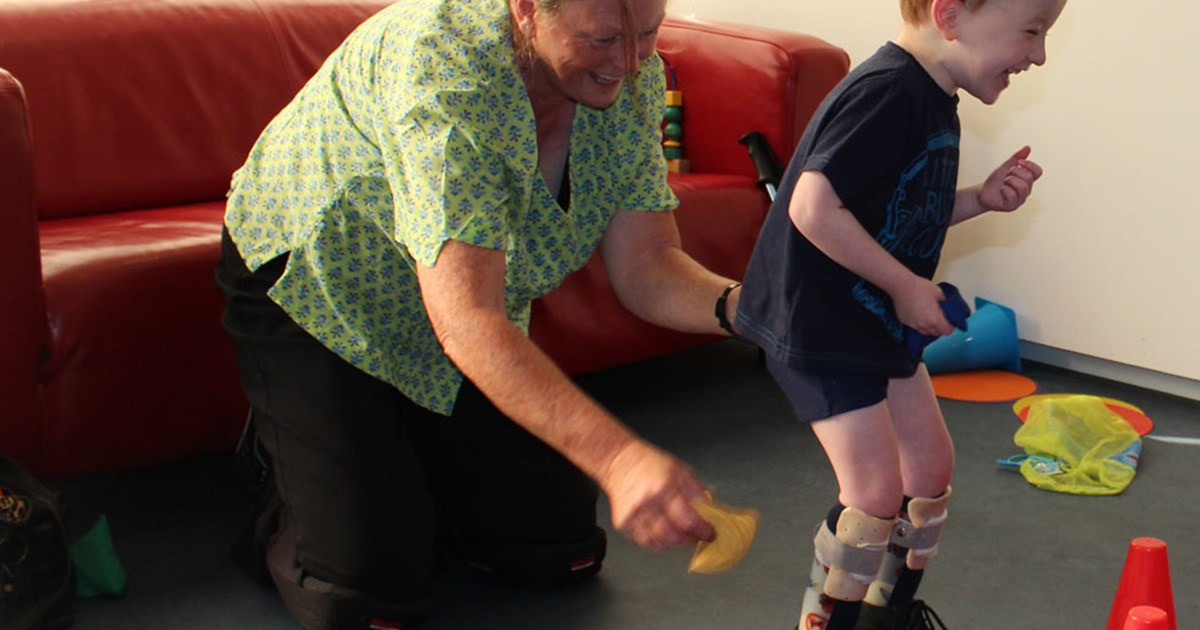The London Orthotic Consultancy runs a monthly clinic at Kingston's gait laboratory, in conjunction with the world-renowned physiotherapist Elaine Owen MBE MSc SRP MCSP.
As well as 40 years' experience and a broad range of postgraduate training, Elaine has postgraduate qualifications in clinical gait analysis and lower limb orthotic biomechanics. She regularly presents her work at international conferences, including the Annual Meeting of the European Society for Movement Analysis in Adults and Children (ESMAC), the American Academy for Cerebral Palsy and Developmental Medicine (AACPDM), the International Society for Prosthetics and Orthotics (ISPO) UK Annual Meeting and World Congress, and the American Academy of Orthotists and Prosthetists (AAOP) Annual Scientific Meeting.

Elaine Owen leading a talk about OSKAR at LOC's Gait Laboratory
Elaine Owen, world-renowned physiotherapist at the London Orthotic Consultancy speaking at LOC for her Advanced Course in Paediatric Gait Analysis with Great Ormond Street Hospital.
In 2012 she was awarded an MBE in the Queen’s New Year Honours List, for services to children with disabilities, in 2011 she received a Welsh Government Recognising Achievement Award and in 2008 she was awarded the ISPO UK George Murdoch Prize for her submission ‘The importance of being earnest about shank and thigh kinematics especially when using AFOs’.
She has a number of published peer-reviewed papers and has recently contributed chapters to two new books, one on the evidence base for physical therapy for children with cerebral palsy and the other on orthoses for children with spina bifida.
Elaine has spent her career in the NHS working with children with movement disorders, and for the last 20 years, she has used a gait laboratory to analyse children’s walking, optimise orthosis designs and set physiotherapy programmes. One of her many achievements has been to develop a comprehensive method of assessment, prescription and fine-tuning of lower limb orthoses. She, along with her team, have challenged conventional wisdom with evidence-based science and rewritten the textbooks. Her methods are now the gold standard for designing, aligning and tuning lower limb orthoses and at LOC we are delighted to have the opportunity to work with her.


Join The London Orthotic Consultancy in celebrating Cerebral Palsy Awareness Day on March 25th. Learn just how important expert orthotic care is in enhancing mobility, independence, and quality of life for children and adults with cerebral palsy.

Introducing the Agilik™ smart orthosis, a cutting-edge, powered knee orthotic now available in the UK through the London Orthotic Consultancy. Unlike traditional KAFOs or heavy exoskeletons, the Agilik™ provides dynamic knee assistance and offers real-time support, reducing fatigue and improving posture. This pioneering, modern technology can help children and adults with lower limb weakness walk more efficiently and naturally. We are honoured to be selected as the exclusive paediatric specialist centre in the UK for the Agilik™ device.

When Sophie noticed her baby Max had a persistent flat spot on his head, she was told it would resolve naturally—but it didn’t. Seeking a second opinion led her to the London Orthotic Consultancy, where Max was diagnosed with severe plagiocephaly.

A little more than four years after the LOCband Lite's launch, we're proud to have successfully treated our 250th helmet therapy patient at our Romford clinic using our cutting-edge 3D-printed cranial band. After five months of treatment, her final scan showed that her asymmetry had decreased from 12 mm to 3 mm.

Sky News published an article this month quoting scientists at Southmead Hospital who claimed there was a lack of research into flat head syndrome and its treatment with cranial remoulding (helmet) therapy. This is our response.

With our non-surgical treatment plan, Alex achieved 100% chest correction in just two years. His treatment involved a combination of dynamic chest compressor and vacuum bell therapy treatment to address his pectus excavatum and rib flaring.

Learn how a custom carbon fibre AFO helped Gill regain mobility and comfort despite complex challenges from shin bone (tibia) removal. We created a truly tailored orthotic solution made from pre-preg carbon fibre at our Cambridge clinic.

Discover how bespoke orthotics and the OSKAR program with Elaine Owen transformed Archie’s life with cerebral palsy quadriplegia, helping him avoid a wheelchair and achieve greater mobility.